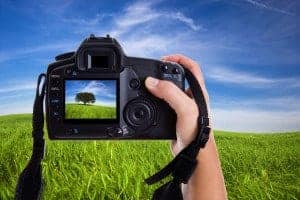
One of the most significant benefits to digital cameras is the LCD screen, which shows you your picture immediately after it was taken. Unfortunately, the LCD also causes severe problems for photographers. In this post, I'll explain a few methods for determining if your exposure is correct by looking at the LCD of the camera.
Is the LCD Accurate?
If you look at the photo on your LCD screen and determine the correct exposure from looking at that photo, you can really get into trouble. Let me give you two examples of how this can cause trouble.
I have recently been using the phenomenal Nikon D7000 after switching over from Canon. After my first 4 or 5 shoots with the camera, I noticed consistent over-exposure problems. I even compared the photo on my LCD to what I saw on the calibrated computer monitor and saw dramatic differences in brightness. To fix this problem, I simply turned down the brightness of the DSLR LCD screen to -1. Problem solved. The LCD now matches the computer screen much more closely and I can mostly trust the LCD.
Another example of when it is a poor idea to judge exposure by looking at the LCD is when shooting night photography. Because it is pure black all around you, night photographers make the common mistake of thinking the exposure is brighter than it really is. This results in under-exposed night photos.
Using the Histogram
The histogram is a tiny graph that you camera can display. The histogram shows the brightness levels of the data in the photo. You can access your histogram on any DSLR manufactured in the last 4 years by pressing the display button to see different display options while reviewing photos via the playback feature. The lines appearing toward the left of the histogram are dark areas of the photo, and the lines on the right represent the bright areas of the photo. It makes little difference how many lines are where on the photo, but a correct exposure means that none of the lines touch the far right or far left of the photo. This prevents shadow and highlight clipping.
I rarely use the histogram because it takes too long and takes my focus away from taking photos. However, I always use the histogram at night to assure that the brightness of the LCD isn't tricking my eyes, and I always use the LCD when I'm using a camera that is new to me. This prevents me from being tricked by an LCD that is unusually bright or dark. I also use the histogram when working with flash photography or in other tricky lighting situations.

Comments are closed.